2017 Toyota RAV4 Vs 2017 Mazda CX-5 Comparison

To say crossovers are a huge hit with consumers is an understatement.
They now sell in greater numbers than sedans, and automakers are introducing an endless parade of new crossovers into showrooms. Mazda is a small automaker but knows all too well the importance of this body style. The CX-5 was the brand’s first crossover developed in-house, and the second generation model addresses a number of changes for 2017. While it was never the best-selling crossover on the market, this new model sets a number of benchmarks for the segment.
Get a Quote on a New Toyota RAV4 or Mazda CX-5To prove this we brought out Mazda’s new crossover and the 2017 Toyota RAV4, which is one of the crowd pleasers in the segment. Comparing these two cars can seem a bit unfair. Toyota has been making crossovers for decades and was a pioneer in the world of crossovers as we know it. Toyota has sold hundreds of thousands of examples over the years and has an overwhelmingly positive reputation with consumers thanks to consistently excellent reliability.
The Premium Mazda
The CX-5’s refresh is significant, looking almost like a brand new car altogether. The swept back design and the sleek lighting elements along with the upright front end give the car far more presence on the road. It looks different and special, especially in comparison to the RAV4, whose design we’ve seen on the road for a few years and is beginning to look a bit stale.
SEE MORE: 2017 Honda CR-V vs 2017 Ford Escape
Inside it’s like the CX-5 is submitting an application into the realm of higher-end, premium vehicles. Our tester features a two-tone leather interior and the dash and center console packs a stylish design. The infotainment screen floats on top of the dash, which may look gimmicky or tacked on, but comes with the added benefit of usability – it’s nice and high and within the line of sight out the windshield. Added to that is a head-up display – a real one, instead of the off-putting plastic screen plopped above the gauge cluster that looks like an aftermarket add-on as in the Mazda3. The head-up display shows the usual suspects like speed, cruise control information and some navigation prompts, but also adds a few more helpful widgets like speed limits and even blind-spot information in the corners of the display.
Advanced Tech Goodies
That, of course, means that there’s a number of high-tech driver aids and safety features on our test vehicle. In addition to the blind spot monitoring system, there’s also a lane keep assist feature and a forward collision warning system. In addition to that, there’s a handy adaptive cruise control. The systems are very customizable, with a number of settings related to sensitivity and types of alerts. For example, instead of an annoying and embarrassing beep when your car detects it’s leaving its lane, you can set it up to emit a bassy buzz that kind of sounds like a phone vibrating on a table. The systems do need more refinement though, as the blind spot monitoring seemed to get a few false positives, and was sometimes triggered by some lights in the dark.
The driving experience is mostly buttoned-down, especially in terms of response and handling. The CX-5 may be the most fun-to-drive crossover in the segment thanks to a combination of technology like the brand’s G-Vectoring Control and the steering rack mounted directly to the subframe of the vehicle. The car feels very agile and engaging, and the engine is noticeably quiet from within the cabin. One small criticism is with the six-speed automatic transmission that, in its default setting, jumps to the highest gear as quickly as possible. It takes a bit of encouragement and patience to get it to downshift and provide acceleration, although when you toggle the Sport switch on the center console, the transmission becomes quite a bit more aggressive and will hold gears longer, reducing the impact of that refined cabin feel. The car just needs a shift logic that is a bit more proactive or with less hesitation before changing gears.
Under the hood is a 2.5-liter four-cylinder engine that makes 187 horsepower and 185 lb-ft of torque going to all four wheels. It feels powerful enough to get around town and is capable of making passes on the freeway without any feelings of inadequacy. The car is also rated to tow more than the RAV4, with 2,000 lb. of capability compared to the Toyota’s 1,500 lb.
Compare Specs
| Vehicle | 2017 Mazda CX-5 | Advantage | 2017 Toyota RAV4 |
|---|---|---|---|
| Engine | 2.5L 4-cylinder | - | 2.5L 4-cylinder |
| Power | 187 hp | CX-5 | 176 hp |
| Torque | 185 lb-ft | CX-5 | 172 lb-ft |
| Transmission | 6-speed auto | - | 6-speed auto |
| US Fuel Economy (MPG) | 23 city, 29 hwy, 26 combined | CX-5 | 22 city, 28 highway, 25 combined |
| Trunk Space | 30.9 cu-ft | RAV4 | 38.4 cu-ft |
| Total Cargo | 59.6 cu-ft | RAV4 | 73.4 cu ft |
| Starting Price | $24,985 | CX-5 | $25,370 |
| Starting Price (CAD) | $27,379.75 | CX-5 | $33,173.98 |
| As-Tested Price | $33,765 | CX-5 | $37,110 |
| As-Tested Price (CAD) | $38,779.75 | CX-5 | $46,982.58 |
The Practical Toyota
The RAV4 is less sexy than the Mazda but more utilitarian despite the lesser tow rating. Like the CX-5 it uses a 2.5-liter four-cylinder engine, and mates that to a six-speed automatic transmission. That engine makes slightly less power than the CX-5, with peak output listed at 176 horsepower and 172 lb-ft of torque, but the transmission is much smoother and changes gears a bit more naturally. One downside, however, is that it comes at a slight hit in fuel economy. The Toyota here earns 22 MPG in the city and 28 MPG on the highway, while the Mazda earns one more mile per gallon in each driving situation. It’s not a huge deal, but it might be enough to sway some buyers.
SEE MORE: 2017 Mazda CX-5 Review
The interior leaves far less of a lasting impression. Yes, it packs a leather interior too, with some stitched elements, and while there are some soft-touch elements in here, though they feel rougher even if you expect that they may last longer. Although it may not be very sexy in marketing materials, it makes sense for the family duties that crossovers are designed for. The styling inside and out just isn’t as attractive as the Mazda, though.
The infotainment system also seems a touch less modern and there’s no option to use Android Auto or Apple CarPlay as a consolation prize. The same driver assistance and safety features are found here, with adaptive cruise control, lane departure warning, forward collision warning, and blind spot monitoring, although the RAV4 is lacking the Mazda’s dramatic killer app: the head-up display. Instead, Toyota has this really neat 3D looking 360-degree camera that’s pretty nifty, although its use is a bit limited in comparison.
Tons of Space
The Toyota’s real trick is how it uses space. There’s far more cargo space in this vehicle, with just over 38 cubic feet of storage behind the rear seats, which is about 7 more than what’s found in the Mazda. When you fold down the rear seats, the amount of useable space expands to 73.4 cubic feet, compared to the Mazda’s 59.6. Also take note of the lower load floor of the Toyota, which is handy. However, if cargo capacity isn’t your thing, then the Mazda boasts a bit more rear-seat passenger space.
SEE MORE: 2016 Toyota RAV4 SE Review
When it comes to driving the Toyota, it’s a surprise how the company makes this large and cavernous interior feel much smaller and agile on the road. While it’s not as engaging as the Mazda, it’s not a completely numb experience.
Pricing is another huge point of emphasis between these two vehicles. The Toyota starts at $25,370 while the model we tested costs $37,110 including destination. The Mazda is slightly cheaper in both situations. It starts at $24,985, while our fully loaded model comes in at $33,765.
The Verdict: 2017 Toyota RAV4 vs 2017 Mazda CX-5 Comparison
After driving these two cars, it seems like they may be for two completely different types of buyers. The RAV4 packs a ton of space and seems more utilitarian, while the CX-5 is more upscale and premium feeling. The Mazda is also packed full of features and drives a bit better than the Toyota, while also being easier on the wallet. It’s the right pick for more customers, unless your biggest priority is cargo space.
Mazda CX-5, Toyota RAV4
LOVE IT
- Looks great
- Head-up display
- Engaging drive
- Price
- Lots of cargo space
- Cool 3d 360 Camera
- Simple technology
LEAVE IT
- Cargo space
- Blind spot quirks
- Transmission refinement
- Less power and fuel mileage
- Pricier
- Looking stale

Sami has an unquenchable thirst for car knowledge and has been at AutoGuide for the past six years. He has a degree in journalism and media studies from the University of Guelph-Humber in Toronto and has won multiple journalism awards from the Automotive Journalist Association of Canada. Sami is also on the jury for the World Car Awards.
More by Sami Haj-Assaad




























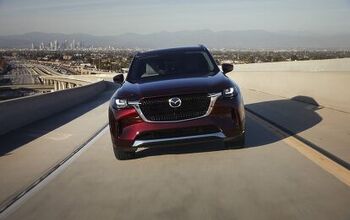



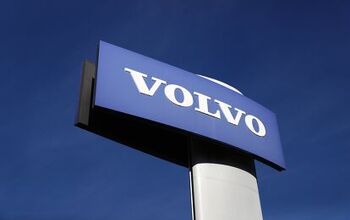

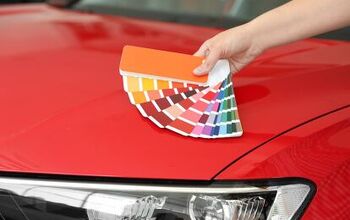


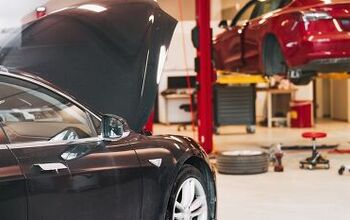
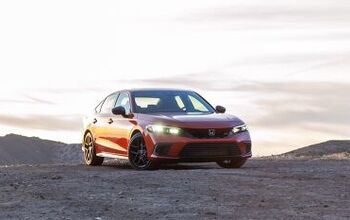
Comments
Join the conversation
what about reliability and IIHS ratings?
from the comparison, there is bias towards RAV that it has better fuel efficiency, but in above data has given tells opposite. I saw another video reviews, said that CX5 better than RAV4 or Honda CRV.